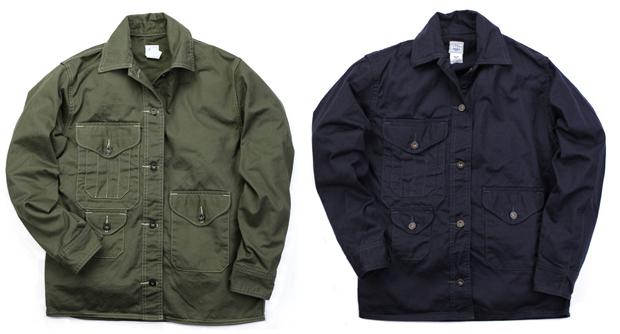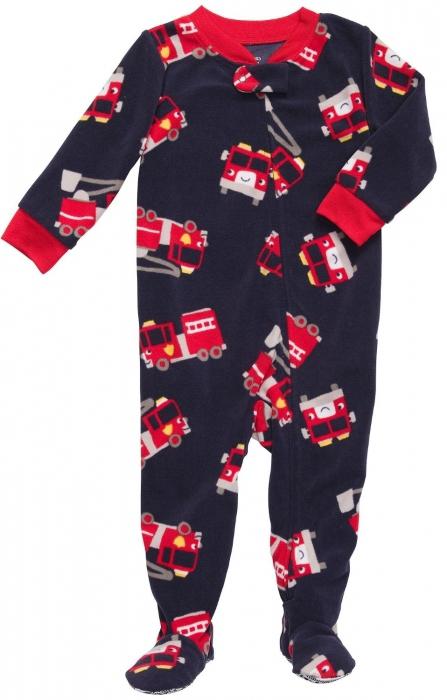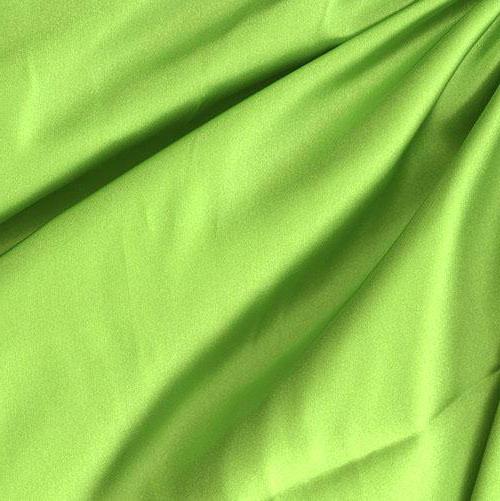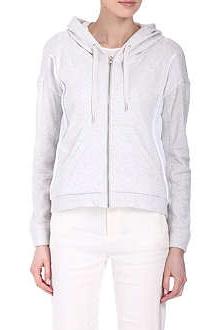What kind of fabric is ramie: composition, properties, application
What kind of cloth ramie (photo is given later inarticle)? It is made from the fibers of the plant Boehmeria Nivea, also known as Chinese nettle, white, green and nandrumi. Refers to a group of so-called bast culture.
Varieties
This hardy perennial plant,belonging to the family of nettles, yields up to 6 times a year. It produces many unbranched stems growing from underground rhizomes, and has a productive period of 6 to 20 years. Contains resins and pectins, because of what the fibers can be used only after chemical treatment.
A real ramie, or Chinese nettle, calledwhite ramie, is cultivated in China. The leaves of the plant are large, jagged, in the form of the heart, from below are covered with white villi, which give them a silvery appearance.
Bomeria is snow-white, or green rami, originally from the Malay Peninsula. Her leaves are smaller, they are green from below, and she is better suited for the tropical climate.

Fabric ramie: a history of cultivation
Chinese nettle is one of the oldesttypes of raw materials used for the production of textile fibers. Woven of them ramie - cloth (translation into Russian - rami) from prehistoric times was used in China, India and Indonesia. The plant has been cultivated for more than 5 thousand years, and in many places it was grown even before cotton. Rami is one of the most commonly used fibers in Japanese fabrics.
In Yichun (China), hand-woven cloth fromthis plant is called "light, like the wings of a cicada, thin as paper, flat as a mirror, refined as silk." A high-quality yarn made of bound high-length ramie fibers was knitted into a very long thread. Then they were hand woven transparent fabrics. In South Korea, where the Rami museum is located, they are called "Moshi".
Historically, Chinese nettles have been used asA valuable material for high-quality outerwear, including top grades of kimono, especially in Japan. Korean traditional Hanbok costume, made of ramie, is famous for its grace. The fabric is light and silky, looks like linen and is suitable for the manufacture of a variety of garments and home textiles.

Modern production
In the 1980s, the improvement of processing technology andthe renewed interest in using natural fibers in clothing led to an increase in demand for Rami fabrics. Bomerye snow white is not used in the textile industry on a large scale because the high cost of raw materials remains, since its production requires complex processes. Rami is an excellent plant fiber with a number of useful characteristics, and the improvement of the methods of its processing can lead to the growth of its popularity in the near future.
The main producers of Chinese nettletoday are China, Brazil, the Philippines, India, South Korea and Thailand. Only a small percentage of raw materials are available on the international market. Japan, Germany, France and Great Britain are the main importers, the rest is used in the domestic market of producing countries.
In Brazil, ramie cultivation began in the late 1930sand reached a peak in 1971 when it was produced 30 thousand tons. Since then, the volume of cultivation has been constantly declining due to competition from alternative crops such as soybeans and the import of synthetic fibers. Production in the Philippines began in the early 1950s and reached a peak of 5,500 tons in the mid-1960s. There it is also steadily declining.

Durable fibers
Rami fibers are very strong, pure white, have a silky shine. It is reported that the ultimate tensile strength is eight times greater than that of cotton, and seven times greater than that of silk.
True, according to other sources, the significance of thisthe index of cotton, flax, hemp and ramie are the same. These discrepancies can be partially attributed to the fact that the strength of the fiber is very dependent on the place of production, processing method, test conditions, temperature and humidity.
Stems rami in height reach 1-2.5 meters. The most suitable climate for cultivation is warm and moist, with an annual rainfall of at least 1000 mm. Well-planted plants can tolerate drought and frost, but grow better when they are not. Since ramie productivity is high, the culture can quickly deprive the soil of nutrients.
Properties
It is better to understand what kind of ramie fabric allows its advantages:
- It has extraordinary absorbing qualities, so it is comfortable to wear, especially during warm weather.
- Fabric ramie from Chinese nettle is resistant to bacteria, mold, alkali, light, insects, is not prone to rot.
- Has a natural resistance to the formation of stains or dirt and facilitates their rapid removal, similar to products made from flax, and better than cotton objects.
- Do not spoil by the action of a weak acid.
- It is fairly easy to color a ramie (cloth). Translation of drawings on her work is not.
- It gets wet well, although dark colors can lose their brightness after repeated washing.
- The strength of the fabric in the wet state increases.
- Withstands high water temperature.
- Smooth shiny appearance of the fabric when washing is improved.
- It retains its shape and does not shrink.
- Can bleach.
In addition, learn what the fabric ramie, its flaws will help. These include:
- Low elasticity.
- Low resistance to abrasion.
- The fabric easily crumples. However, appropriate processing to make it resistant to wrinkling, or mixing with synthetic fibers can reduce this problem.
- Stiffness and brittleness.
- The expensive fiber reduces itcompetitiveness in relation to other types of textiles. The reason for this is the high labor intensity of production, collection and decortication - the separation of the core from the stem.
- The need to remove the resin before processing the fibers.

Using
Fabric ramie application finds in many consumer goods. In particular, it is used in the manufacture of:
- clothing - dresses, suits, skirts, jackets, trousers, blouses, shirts, children's clothing, mixed with cotton used in knitted sweaters;
- decor items - curtains, drapes, upholstery, bedspreads, bed linen, tablecloths, kitchen towels;
- sewing thread;
- handkerchiefs;
- parachutes;
- woven fire hoses;
- canvases;
- filters.
About what kind of cloth ramie, says heruse in a mixture with wool. In this case shrinkage of the latter decreases considerably. Short waste is used in the production of high-quality banknote and tissue paper. Since the rami absorbs phosphorus, the fibers can be used, for example, to purify water bodies suffering from an excessive amount of nutrients released in the manufacture of sugar.
Coarse fibers are used in the manufacture of twineand cords, for which the strength and inelasticity of the material is the most suitable. High strength of wet fiber, its ability to dry quickly and resistance to the action of bacteria have found application in the manufacture of fishing nets.
Rami in the mixes
In the ramie fabric, other fibers are introduced(for example, 45% cotton) because of its unique strength, absorbency, gloss and good colorability. In a mixture with high-quality cotton it provides increased endurance, shine and color. When mixed with wool, Rami gives it lightness and minimizes shrinkage. In a mixture with viscose, it compensates for its low strength in the wet state.

Care ramie: what kind of fabric?
Procedures for the care of Chinese productsNettle, indicated on the labels, differ. For items from a 100 percent ramie, care for the fabric is not demanding. As a rule, they can be washed or dry cleaned depending on the coloring, decoration and design. Fabric ramie, whose properties allow it to withstand high temperatures, can be washed in hot water and ironed at maximum levels. Nevertheless, color retention, shrinkage control or mixed fiber properties can dictate a lower temperature. Recent laboratory tests have concluded that the best results are achieved when a more gentle or more specialized care is used. For example, fabrics retain color and shape without wrinkling when they are cleaned dry.
Machine wash cold in gentle waterwith drying on a rope was better than machine washing in warm water with drying in a drum with a constant cycle of cold pressing. Hand washing in cold water with flat drying is the most recommended home care method for knitted and woven items. A consumer who knows the strengths and weaknesses of a fiber can get the maximum satisfaction and pleasure from using products from the ramie.
What kind of fabric, will help to know and information aboutconditions of storage of products from it. They should be kept "lying". Rami fibers are fragile and tend to fracture. You should avoid folding clothes or do creases in woven materials.
Role in agriculture
The following features of ramie farming affect the suitability of the relevant agricultural production:
- it is a long-term culture, living from 6 to 20 years;
- it is capable of yielding high yields of biomass, but if harvesting provides for its full collection, this sharply reduces fertility;
- Rami is susceptible to a number of pests and diseases, including nematodes.
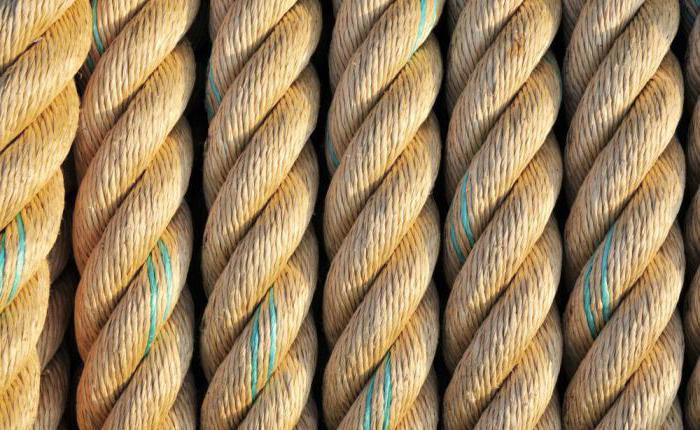
Technological: crop
Rami is a member of the family of nettle andis a hardy perennial plant that produces a large number of unbranched stems from underground rhizomes 1 to 2.5 m high. The culture, as a rule, propagates vegetatively, with the help of roots or stem cuttings. Yield starts to fall when the rhizome becomes too much.
Harvesting
Rami is usually collected two to three times a year, but withgood growing conditions can receive up to six crops. Collection is performed immediately before or shortly after the beginning of flowering, since at this stage, a decrease in growth is observed and the maximum fiber content is reached. The stems are collected by cutting them slightly above the lateral roots, otherwise they may bend, the core will break and be separated from the plant. Combines for mechanization of this process are developed, but are not used commercially. After harvesting, while the plants still fresh from them, the core is removed, as this becomes more and more difficult as the rami dries. Fibers are dried as quickly as possible to prevent their damage by bacteria or fungi.
The dry weight of ramie yield in the tropics and temperatelatitudes is in the range of 3.4 to 4.5 tons per hectare per year, of which up to 1600 kg / ha per year of dry raw materials. Weight loss during de-grinding can reach 25%, resulting in production of about 1200 kg / ha of raw materials per year.
Extraction of fiber
Once the harvest is harvested, the stems should beto remove the fibers - the yarn, from which then the yarns are obtained, and from them the fabric ramie is already weaving. The description of the processing process, which takes place in three stages, is as follows.
- First, the core is removed manually or by machine. The process is called decortication.
- In the second stage, the covering cloth, the parenchyma and some of the resins and pectins are scraped off the core.
- The third stage includes washing, drying andde-grinding the ramie to remove the fibers. Information on the process of extraction of resin, as a rule, is considered a trade secret. It can be carried out by chemical, microbiological and other methods.

Fiber
About what kind of fabric ramie, says and usedin its production, fiber is one of the best materials of plant origin. It is exceptionally long - its size reaches 580 mm, and the average length is 125 mm. The fiber is very strong, pure white with a silky sheen.
When manually spinning, rami is used in the same way asflax - it can be wet or dry. From a wet yarn a smooth, soft, very shiny thread is obtained, and the dry one shines less and is more rigid. Ramie easily mixes with other fibers, such as wool or silk, although the length of the plant can sometimes cause difficulties.
The intangible cultural heritage of mankind
High-quality, lightweight, patterned textileproducts made from ramie, ideal for hot and humid Japanese summer. Odzia-tijimi and etigo-zefu are techniques for fabricating Rami fabrics in the Uonuma region, Niigata Prefecture, created in the northwestern part of Japan's main island, characterized by colder climates and snowy winters. The fibers are separated from the plant by the nails and twisted into the threads by the palms. Before coloring, the bundles are tightly bandaged with cotton in such a way that a geometric or floral pattern is obtained when the thread is intertwined with a simple hand loom. The cloth is washed in hot water and kneaded, after which it is still wet for 10-12 days spread on snow-covered fields so that the sun shines on it and ozone formed during the evaporation of snow.
Clothes obtained by this method, for manycenturies has been popular among people of different social strata. Practiced today mainly by the oldest artisans, art remains an object of cultural pride and is an important tool for strengthening the sense of identity in society.
Techniques are included in the list of intangibleheritage of humanity of UNESCO in 2009. In 2011 the list was replenished with the Korean method of making Mosi - the finest variety of Rami fabric. The process involves collecting, brewing and bleaching plants, spinning threads with a spindle, and finally weaving on traditional weaving looms. Rami is comfortable in hot summer weather and is used from making costumes and military uniforms to funeral outfits. The white fabric, its elegance and accuracy allows you to sew expensive and casual clothes out of it. Weaving traditionally deals with women, while mothers transfer technology and experience to their daughters. Traditions strengthen social ties, as neighbors gather and share parts of the process. Currently, this industry in the province of Hansan employs about 500 people.
</ p>>


